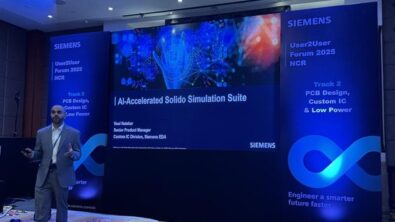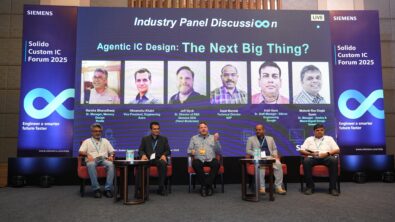How Solido’s AI-Assisted Design Optimization Handles Extensive Design Spaces

At the Design Automation Conference 2024, I had the opportunity to sit down with Austin Rhodes from Micron Technology at the Siemens EDA booth to discuss the collaboration between Micron and Solido over the years. The result of this collaboration was featured in a co-authored paper, the paper was not only accepted and published at DAC, but also nominated for the prestigious Gladiator Posters—recognizing the best contributions at the conference. Our discussion centered around the innovative application of Solido’s AI technologies to tackle the immense design complexity Micron faces in verifying and optimizing circuits with hundreds of thousands of design combinations.
You can watch the full interview with Austin Rhodes on Siemens webiste
Addressing Complex Design Challenges with AI
In our interview, Austin and I reflected on the traditional challenges Micron faces with certain circuit components, particularly metal-layer switches and charge pumps, which are essential in adjusting voltage levels and compensating for process variations. These components need to be optimized multiple times throughout a product’s lifecycle, and traditionally, this was a manual, iterative process—time-consuming and labor-intensive. This manual approach, while effective to an extent, often leads to sub-optimal solutions and longer design cycles.
The tuning of these circuits is no trivial task. For example, a delay gate with multiple switch options can generate up to 131,000 unique design combinations. The sheer complexity involved in optimizing charge pumps or gate arrays, with tens of thousands of potential configurations, means that even a highly skilled engineer can spend days or weeks manually iterating designs without exploring all possibilities. This was the core challenge we aimed to address with AI-powered design optimization.
The Role of Solido Design Environment
We presented our joint poster at DAC on how Micron leveraged Solido Design Environment’s AI-assisted optimization methodology, Solido’s capability to explore up to 260,000 design combinations orders-of-magnitude faster -something practically impossible for manual methods- allowed Micron to automate the optimization process. The use of AI in this context ensures that the tool efficiently explores the design space, testing multiple design candidates simultaneously while identifying the optimal design parameters.
The AI-driven optimization not only significantly shortened the design cycle from weeks to just a few hours but also led to improved circuit performance. For instance, Solido’s methodology provided over a 3% increase in circuit efficiency and 13.06% size reduction compared to the designer-tuned circuit, while reducing CPU time, as highlighted in our case study on switch optimization and charge pump design.
Future Prospects and Continued Collaboration
As we look toward future work, the value of Solido’s AI technologies extend far beyond the scope of this paper we presented at DAC. Moving forward, Micron aims to further automate the optimization flow by integrating additional device parameters, expanding the design space even further. Moreover, the ability to automate the schematic back-annotation process will bring another layer of efficiency, offering deeper insights into device-level performance that previously required time-consuming manual effort.
The AI-assisted optimization work presented at DAC 2024 showcases how the collaboration between Micron and Siemens EDA, through Solido’s advanced capabilities, is revolutionizing the way complex circuits are optimized. As our collaboration continues, we’re excited to see even more advanced solutions in custom IC design.
If you’re interested in learning more, you can find the poster abstract on DAC’s website.


